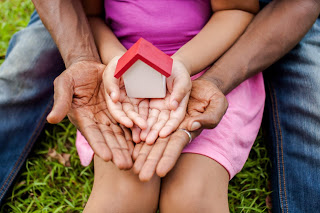Resilience is a process and opportunity, not something children have or don’t have

Originally posted 6th February 2019
Studying resilience with children and adults exposed to intimate partner violence (IPV) has taken me on a journey that has resulted in a fundamental shift in how I do research, teach and counsel clients. This has been significant in my understanding of adversity, trauma and the profound role of resilience.
When I initially encountered the term resilience I approached it with skepticism and questions. Was it a “feel good” term to minimize the fall-out from very big problems in people’s lives? Or a tool used by governments to scale back on service funding using platitudes like kids are resilient; they’ll be fine; they’ll bounce back – which has not been my experience with highly vulnerable children.
Fostering resilience is a concerted effort that needs to be intentionally built into programming.
Is resilience something people simply have or don’t have with very little in between? Up until recently, the research literature focused largely on individual characteristics for explaining why some people are more resilient than others. These identified characteristics are often related to personality traits – including intelligence, easy temperament, and extroversion for example – traits that appear from birth.
Is resilience a state or a trait?
This then led me to take a deeper dive into writings on this topic, bringing me to the many debates as to whether resilience is a trait or state. These conceptual debates dominated the literature for a long time and large international conferences have been held to discuss, define and sort out this elusive concept. It became clear to me, though, that these debates were more about inter-disciplinary orientations divided into camps of individual or environmental stances.
Resilience is a process. Not a singular event or state of being, but an active process of fostering resilience over the life course.
As a social worker I have landed on an interactive explanation of resilience. The conditions for fostering resilience, from this perspective, requires personal factors and environmental influences to come together, in the right combination.
In my research I interviewed adult survivors exposed to intimate partner violence in their childhoods, and collected data using resilience measures from mothers and children exposed to intimate partner violence. This was conducted alongside longitudinal data on protective factors from a large scale Canadian study: the National Longitudinal Survey of Children and Youth (NLSCY). From this work, I have come to the conclusion that a person-in-environment/ecological framework best helps to elucidate factors and processes contributing to resilient outcomes.
A person-in-environment/ecological lens is needed for resilience informed practice.
Kids cannot be resilient on their own. The important people in their lives – their families, cultural supports, their networks of positive peers, and well-resourced neighbourhoods – are all part of the picture of fostering resilience.
Programming needs to be resilience informed.
Because resilience has only recently come across our radars, as helping professionals providing services children who display vulnerabilities in the face of adversity, we need to take stock and inventory of how resilience informed these services actually are. Are protective factors, strengths and potential sources of resilience identified at intake or through the assessment process? Are resilience based goals well-articulated in treatment planning? Are these clearly spelled out and measurable?
For ideas on how to make your program resilience informed please visit www.makeresiliencematter.ca for further research findings and reports, tools, case studies and podcasts to support your practice and programming.




Recent comments